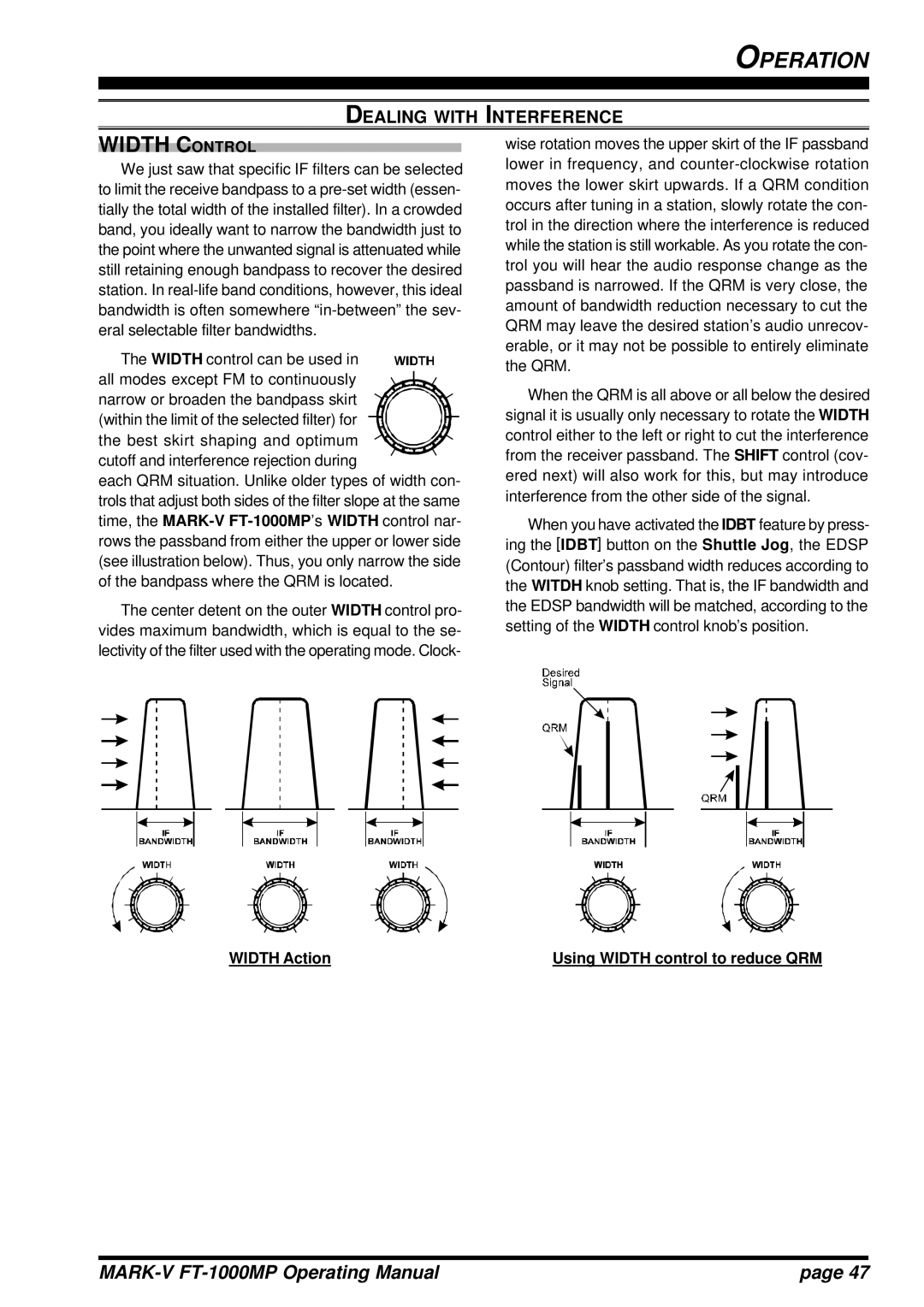
OPERATION
DEALING WITH INTERFERENCE
WIDTH CONTROL
We just saw that specific IF filters can be selected to limit the receive bandpass to a
The WIDTH control can be used in all modes except FM to continuously narrow or broaden the bandpass skirt (within the limit of the selected filter) for the best skirt shaping and optimum cutoff and interference rejection during
each QRM situation. Unlike older types of width con- trols that adjust both sides of the filter slope at the same time, the
The center detent on the outer WIDTH control pro- vides maximum bandwidth, which is equal to the se- lectivity of the filter used with the operating mode. Clock-
wise rotation moves the upper skirt of the IF passband lower in frequency, and
When the QRM is all above or all below the desired signal it is usually only necessary to rotate the WIDTH control either to the left or right to cut the interference from the receiver passband. The SHIFT control (cov- ered next) will also work for this, but may introduce interference from the other side of the signal.
When you have activated the IDBT feature by press- ing the [IDBT] button on the Shuttle Jog, the EDSP (Contour) filter’s passband width reduces according to the WITDH knob setting. That is, the IF bandwidth and the EDSP bandwidth will be matched, according to the setting of the WIDTH control knob’s position.
WIDTH Action | Using WIDTH control to reduce QRM |
| page 47 |
